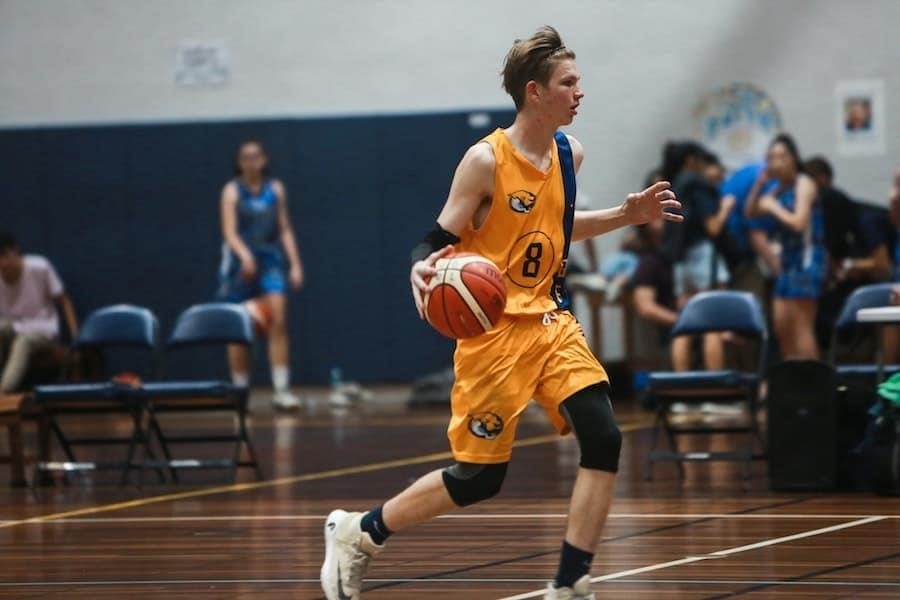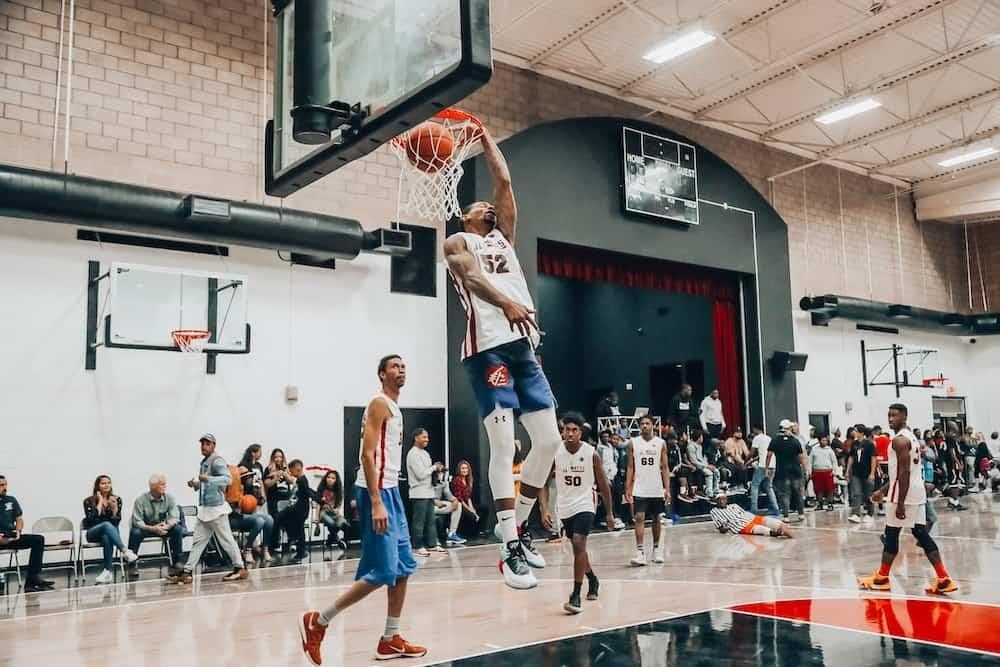No products in the cart.
Blog
Why Basketball Players Wear Leg Sleeves: 3 Main Benefits
I will always remember the experience of attending my inaugural NBA match. It took place in 2003 with the Atlanta Hawks facing off against the Memphis Grizzlies. I was surprised by the sheer number of players wearing leg coverings that resembled tights.
I recall questioning whether the leg sleeves actually gave any support or if they were simply a style statement made by the athletes. Here, we will review the three primary advantages that leg sleeves provide to basketball players. Additionally, we’ll consider arm sleeves and explain why they have become popular among basketball players.
3 Benefits of Leg Sleeves for Basketball Players
1. Prevention of Future Accidents/Injuries
Basketball players usually don leg sleeves to safeguard their lower extremities from harm. This sport can be quite tough on the knees, ankles, shins, and toes. Moreover, the NBA has a gruelling and exacting schedule, with squads playing three to four matches each week.
Playing lots of basketball could potentially result in a range of painful lower limb injuries, including tendonitis, sprains, and shin splints. Players have found that leg sleeves can be a protective measure against such injuries, due to the increased blood flow and improved circulation that the sleeves provide. This works in the same way as compression shorts, by keeping the area toasty and snug.
Playing basketball can be a physically demanding sport that includes hard contact, leading to scrapes and abrasions. To avoid having to leave the game due to an old injury flaring up, many players use leg sleeves as a means of protection.
2. Solace
Leg sleeves have become quite popular among NBA players due to the comfort and confidence they offer. Compression sleeves help speed up the process of warming up the muscles, so the player feels more comfortable and confident.
Leg sleeves help basketball players feel more comfortable due to their sweat-absorbing material. As basketball is a physically demanding sport, many players tend to sweat a lot.
Leg sleeves are usually constructed with a quick-drying fabric such as polyester, nylon, spandex, or a blend of the three. This helps keep players feeling dry and not weighed down by moisture.
3. Enhanced Efficiency
Basketball players, as with any other athletes, strive to gain any form of competitive edge possible. Wearing leg sleeves can help boost a player’s jump height and range of motion due to increased blood flow and circulation.
Leg sleeves can be advantageous in decreasing muscle soreness and tiredness, which is especially beneficial for squads that have games in consecutive evenings. Decreasing muscle soreness allows a player to perform at a higher standard.
Leg sleeves provide a stylish, attractive look. It may be merely a small psychological benefit, but athletes often perform better when they feel they appear good. The popular saying, “Look Good, Feel Good, Play Good” is indicative of this.
Why Do Some Basketball Players Only Wear 1 Leg Sleeve?
Many basketballers will don leg sleeves only if they are attempting to avert a recurrence of injury. If the player has previously hurt only one limb, they are likely to don a compression sleeve exclusively on that leg.
Consider leg sleeves in the same way you would a knee brace. You likely wouldn’t put a knee brace on a knee that hasn’t had an issue before. The same concept applies to leg sleeves.
LeBron James began wearing a single leg sleeve following a groin injury he sustained roughly twelve months ago. Celebrities in the NBA, such as Devin Booker and Dwight Howard, also opt to wear a sleeve on a single leg. Other renowned NBAers began donning a solitary leg sleeve as a homage to Kobe Bryant after his death in January 2020.
Other Types of Sleeves that Basketball Players Wear
Arm Coverings

Basketball players don’t just don leg sleeves; many players also sport arm sleeves, which go from the biceps to the wrists. These sleeves provide support for the elbow and keep the shooting arm warm.
20 years ago, Allen Iverson, a Hall of Fame point guard, set a trend by wearing an arm sleeve. This was due to a troubling case of bursitis in his shooting elbow, for which the sleeve was recommended by trainers. It worked, as Iverson went on to win the MVP Award for the 2001 season while with the Philadelphia 76ers.
It’s now quite common to observe NBA players adorning their arms and even legs with sleeves, both on their shooting and non-shooting sides. For instance, LeBron James, one of the most impressive players in the past and present, sometimes wears a sleeve on his right (shooting) arm. The late, legendary Kobe Bryant also donned arm and leg sleeves at different points in his illustrious NBA career.
Arm sleeves have become a real hit with NBA aficionados due to so many of the sport’s elite athletes sporting them. Recent statistics even show that up to 65% of NBA basketballers don a single arm sleeve. The NBA has even declared that arm sleeves are one of their most successful non-apparel items.
Knee Support Sleeves

Players of basketball who have had ill-fated experiences with knee injuries tend to don knee sleeves. McDavid, a maker of many different sorts of athletic compression covers, provides knee covers with and without additional cushioning around the knee joint. McDavid is highly esteemed in the sports world and has been producing excellent sportswear items since 1969.
Knee sleeves provide additional support to the knee joint, helping to reduce the risk of tears in the ACL, MCL, and PCL ligaments. This is a key advantage of the knee sleeve since recovering from a serious knee injury can take up to twelve months. Any action a basketball player can take to avoid suffering a knee injury is worth taking.

